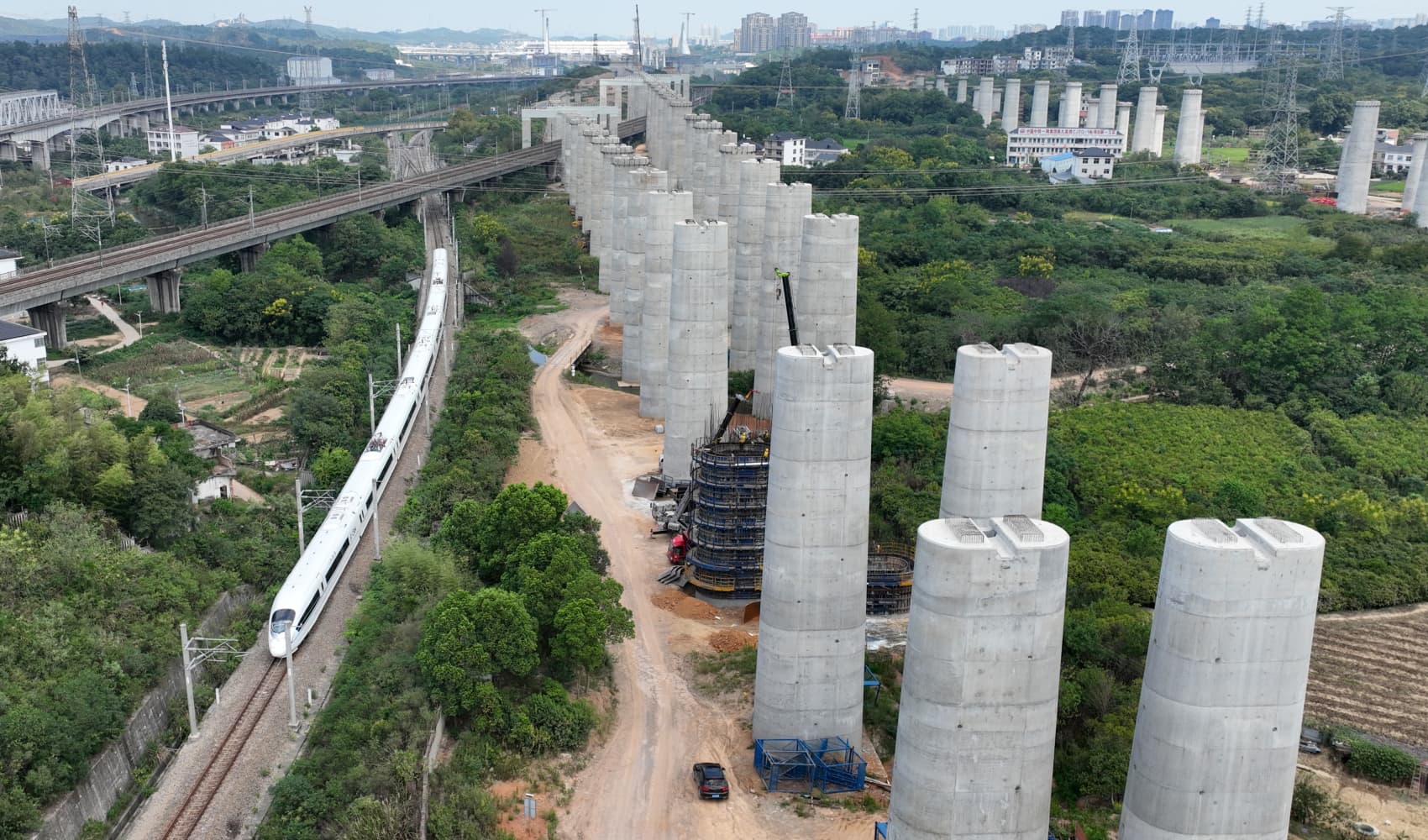
- After a second day of meetings about a contract impasse with port ownership on a new contract, Harold Daggett, president of North America's largest longshoreman union, the ILA, told members they must be prepared "to hit the streets at 12:01 on Tuesday, October 1.”
- Businesses across major sectors of the economy, from retail to manufacturing, and logistics firms have become increasingly concerned about a strike even though the ILA has a long history of hammering out new deals and has not gone out on strike since 1977.
- USMX, the group representing ports management, said in a statement posted to its website that the ILA continues to "strongly signal" that it has already made the decision to strike.
After two days of meetings of North America's largest longshoremen's union amid an impasse with port ownership on a new contract, concerns of a strike are growing amongst those in the business and logistics community.
A strike by the International Longshoremen's Association, which moves the trade at the ports along the East Coast, Gulf Coast and Puerto Rico, would impact 43% of all U.S. imports and billions of dollars in trade monthly.
At the conclusion of a two-day meeting of the union's wage committee on Thursday, union members voiced unanimous support for a strike on Oct. 1 if a new contract meeting its demands doesn't materialize. Harold Daggett, president of the ILA and the union's chief negotiator, has said he wants a good economic deal for his members, which includes union opposition to port automation and exclusive port contracts.
Get top local stories in San Diego delivered to you every morning. Sign up for NBC San Diego's News Headlines newsletter.
In a video featuring Daggett played before the energized crowd, he said bargaining in good faith is the only way to get an agreement and threatened a worker slowdown if the Biden administration forces the union workers back to the docks using the Taft-Hartley Act.
"Taft-Hartley means I have to go back to work [for 80 days] after a cooling off period," said Daggett. "What do you think when I go back after those [80 days], that those men are going to go back to work on that pier? It's going to cost them money. They're going to be like this," he said, making a gesture of putting his hands around his throat in a choke hold. "The company's money to pay their salaries while they go from 30 [container] moves an hour maybe to eight?" he said. "You're better off sitting down and let's get a contract and let's move on with this."
A worker slowdown was employed during recent labor strife involving ILWU negotiations covering West Coast ports, where vessels were not worked on expeditiously, creating backlogs of container pickups for trucking and rail. There has been a wave of union actions in recent years impacting ports, rails, and the global supply chain, from Europe to the West Coast and Canada's rail strike, the most recent action, last month.
Money Report
The United States Maritime Alliance, which represents ports ownership, said in a statement posted to its website that it remains committed and prepared to resume negotiations with the ILA on a new master contract before the current agreement expires and to avoid a strike. "The ILA continues to strongly signal it has already made the decision to call a strike and we hope the ILA will reopen dialogue and share its current contract demands so we can work together on a new deal, as we have done successfully for nearly 50 years," USMX stated.
Governments have used national law to force union workers back on the job in recent years, from the Canadian rail strike to the freight rail strike in the U.S. in 2022.
The Biden administration told CNBC this week it supports collective bargaining as the best way for American workers and employers to come to an agreement. "We've never invoked Taft-Hartley to break a strike and are not considering doing so now," an administration official said.
Since its enactment, presidents have intervened in labor disputes under Taft-Hartley on 37 occasions.
A strike by the ILA would have significant economic implications for the U.S. Analysts at Sea Intelligence have estimated East Coast ports in the U.S. would handle 2.3 million TEU (twenty-foot equivalent units) in October. That translates to 74,000 shipping containers per day. The value of that daily freight is upwards of $3.7 billion based on an MDS Transmodal estimate of $50,000 per container.
Sea-Intelligence has estimated a one-day strike by the ILA would take five days to clear. A one-week strike in October could cause slowdowns until mid-November.

The National Retail Federation led a coalition of 158 state and federal trade associations in June when it sent a letter to President Biden urging the administration to work with the negotiating parties to reach a new agreement. Earlier in the year, NRF sent a letter to ILA and USMX calling for the resumption of port labor negotiations.
The union stopped talking to ports management in July citing alleged violations of contract terms related to the use of automation at ports.
"Any disruption resulting from the United States Maritime Alliance and the International Longshoremen's Association negotiations would deal an immediate blow to the manufacturing supply chain," said the National Association of Manufacturers' managing vice president of policy Chris Netram. "A work stoppage at East Coast and Gulf Coast ports would upend logistics for U.S. businesses and hinder the movement of goods upon which millions of Americans depend. Costs will rise and manufacturing jobs will be lost if parts and supplies don't arrive on time."
A recent analysis of potential ILA strike impact shared with CNBC by the U.S. Chamber of Commerce — and prepared by Mitre Corporation, which operates federally funded research and development centers on behalf of government, industry and academia — noted that although no coastwide disruption has occurred since 1977, "opposition to increased port automation and demands for higher wages are major issues in the current negotiations."
The Mitre analysis estimates that a 30-day strike centered at the ports of New York and New Jersey could result in economic impact as high as $641 million per day. In Virginia, an economic impact of $600 million per day is forecast, or roughly $18 billion over 30 days. Export impacts at Houston operations could reach $51 million per day, and $41.5 million per day for imports.
NRF President and CEO Matthew Shay says the threat of a strike during the peak shipping season has many retailers already implementing costly mitigation strategies.
"At a time when inflation is on the downward trend, a strike or other disruption would significantly impact retailers, consumers and the economy," said Shay. "The administration needs to offer any and all support to get the parties back to the table to negotiate a new contract."
In a statement to CNBC, Steve Lamar, American Apparel & Footwear Association president, said a disruption to the East and Gulf Coast ports would have major impacts on the cost and availability of apparel, footwear, and travel goods, as more than half of all apparel, footwear and accessories move through these ports. "A strike this fall would occur during peak holiday shipping season and coupled with the ongoing Red Sea crisis would raise the cost of these goods even higher," Lamar said.
Based on Xeneta data, East Coast labor has seen a decrease of almost 2% in import tonnage processed between Q4 2023 and Q2 2024. Emily Stausbøll, Xeneta senior shipping analyst, says the data suggests some shippers are shifting imports from the U.S. East Coast to the U.S. West Coast. ILA longshoremen receive royalties based on how much tonnage they process in a year at their port. This compensation model makes it in the best interest of the ILA workers not to have cargo diverted or their bonuses will decrease.
Videos played during the two-day meetings focused on a call to action and strike preparations. The current contract expires exactly three weeks and four days from Thursday. "We must be prepared," Daggett told delegates at the meeting, "to hit the streets at 12:01 on Tuesday, October 1, 2024."
The ILA and USMX each filed F-7 forms with the Federal Mediation & Conciliation Service to notify the FMCS their contract is expiring. This procedural measure is required by the National Labor Relations Act for all private-sector collective bargaining agreements. The USMX said it was notified by the union that it had filed the F-7 form on August 19. The USMX filed its form with the FMCS on August 23.
Once the FMCS reviews the forms, it reaches out to both parties to see what services it might want to use to build relationships and negotiations. Both parties would need to agree to any FMCS assistance. The FMCS is a neutral, independent, third-party. The FMCS has reached out to both parties, but has offered no indication of developments related to its involvement.
The ILA has said details of its contract demands will not be released.
"These companies are making billions of dollars, they should take us along," Daggett said at the union meeting. "We brought them to where they are. Now they want to get rid of us. That's not fair at all and this Union's been around close to 200 years."
Correction: Matthew Shay is president and CEO of the National Retail Federation. An earlier version of this article gave an incorrect first name.






